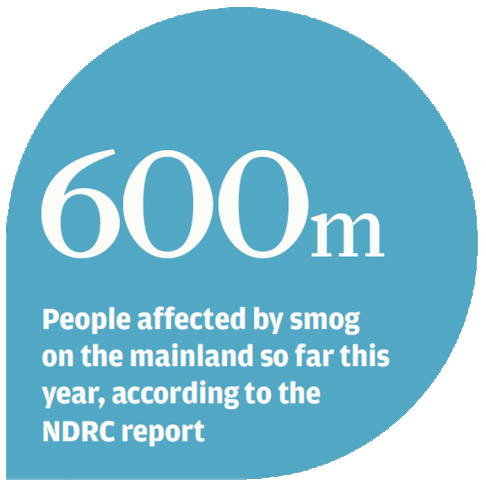
Energy efficiency targets may be missed, Beijing economic planners admit
China said it may miss its five-year energy efficiency targets as local governments continue to rely on energy intensive industries to boost growth, despite damage to the environment.

About 600 million people were affected by the smog that has shrouded a quarter of the mainland's territory since the beginning of 2013, the report said. It cited rampant economic growth combined with unfavourable meteorological conditions and flawed pollution prevention enforcement as the major causes.
The government's economic planning agency warned that the country faced "an arduous task" to meet its target to cut energy intensity by at least 3.7 per cent this year. Energy intensity is measured by dividing energy consumption by gross domestic product (GDP). The growth rate of industrial energy consumption has been increasing since April, while GDP growth has slowed.
The government has targeted reducing energy intensity by 16 per cent between 2011 and 2015.
"In some areas, local governments are putting more emphasis on stimulating growth as pressures mount amid the economic downturn. Energy conservation and pollution reduction efforts have slackened as a result," the report said.
The report admitted that discrepancies exist between local and national energy statistics, without elaborating on the causes for these discrepancies.
National statistics indicate that energy intensity dropped just 5.5 per cent in 2011 and 2012, while local statistics put the decline at 7.7 per cent.
"Local figures are not in line with the national figures ... Even if all local targets were met, the country may still fail to achieve its energy intensity target for 2015," the report said.
Li Shuo , a campaigner with Greenpeace, said that although the discrepancies between the two sets of data were no secret among researchers, this is the first official acknowledgement by the NDRC. This suggests the economic planning agency has come under "mounting pressure to meet energy targets".
"Meeting the energy intensity target is an uphill battle, and the task is getting more difficult as more manageable energy efficiency targets have already been achieved over the past several years," said Li.
The mainland's energy intensity dropped by 19.1 per cent between 2005 and 2010, but still fell short of the 20 per cent target for the period, Li noted.
The NDRC report also highlighted a trend of energy-intensive industries relocating to the western provinces, where local governments have been relaxing environmental standards.

